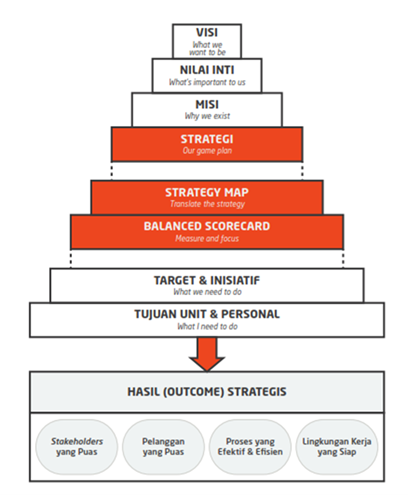
ASK
ME

REGISTER
NOW
The achievement of the work program of Unika Atma
Jaya will be measured through a number of performance indicators, which are
formulated using the Strategy Maps and Balanced Scorecard approach.
The strategy of an organization describes how that
organization creates and delivers value to stakeholders, customers, and the
community at large. Without a common understanding of that strategy,
organizational leaders will not be able to create alignment in performing their
respective functions. And without alignment, leaders cannot implement new
strategies that are capable of facing various external challenges by optimizing
the internal resources they have.
Strategy is not a standalone management process.
Strategy is one of the stages in a continuum that moves the organization from
vision and mission to the work activities carried out by members of the
organization. Thus, the alignment between the daily work performed by the
organization's members and the vision and mission that the organization aims to
achieve together can be seen.
A strategy map is a strategic framework that helps
organizations find the link between the vision and mission they want to achieve
with the intangible assets owned by the organization. Meanwhile, the Balanced
Scorecard is a tool used to measure the achievement of strategies that have
been formulated in the strategy map. Both approaches were developed by Robert
S. Kaplan and David P. Norton.
If the vision, mission, and core values of an
organization apply in the long term, then the strategy is the plan for
achieving all three that is divided into shorter terms, ranging between 3
(three) to 5 (five) years. Therefore, before formulating a strategic map, it is
necessary to first formulate the strategic theme that wants to be achieved
during that period of time.
The relationship between the vision, mission, core
values, and strategy of an organization.
